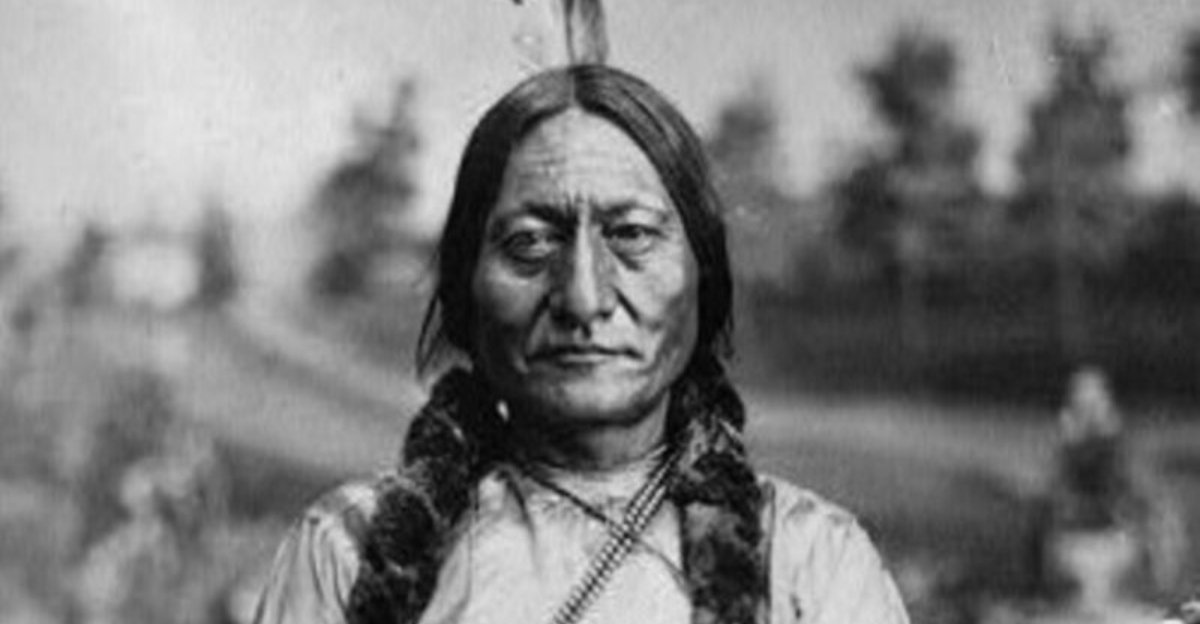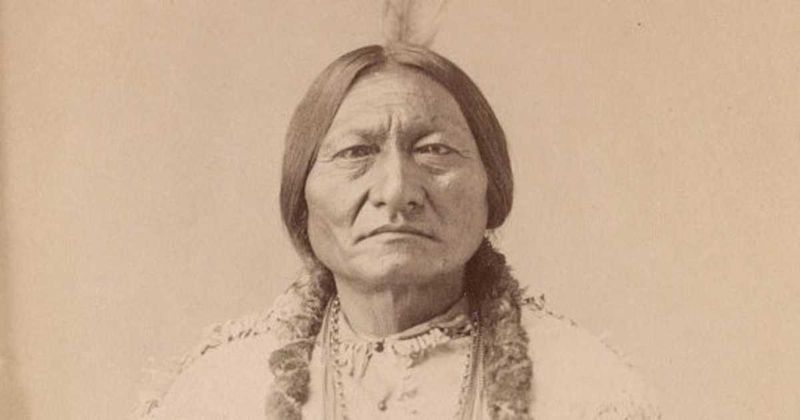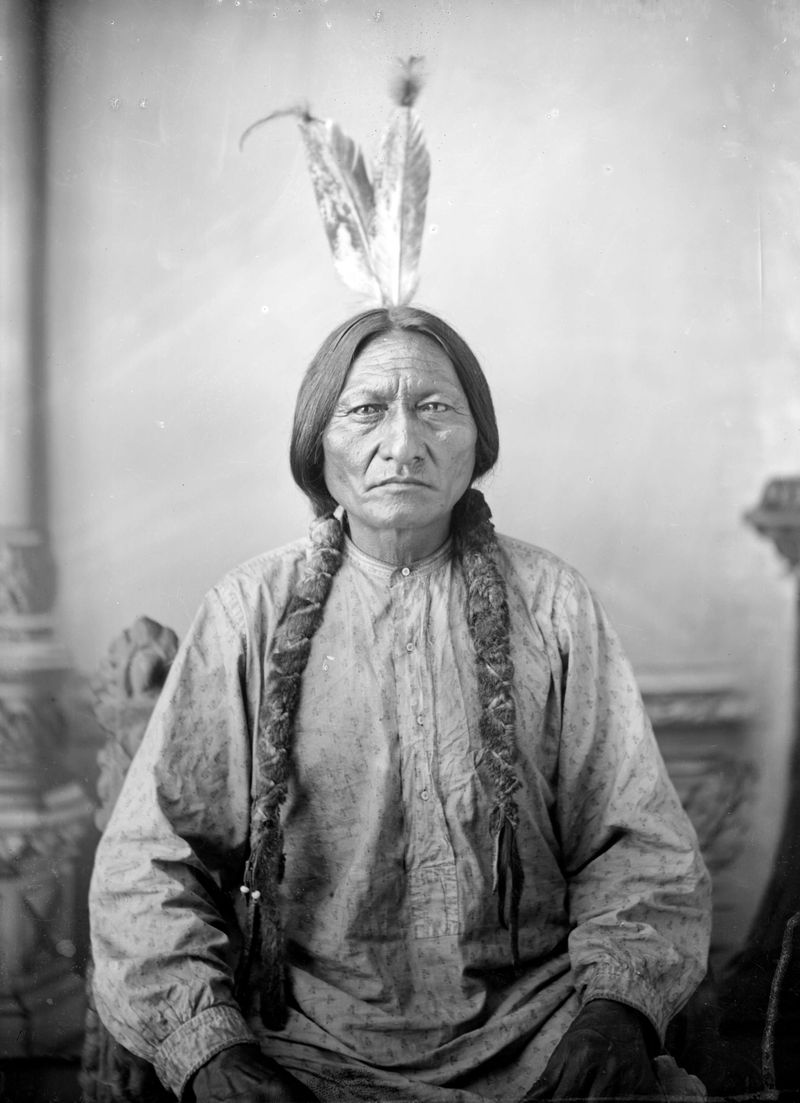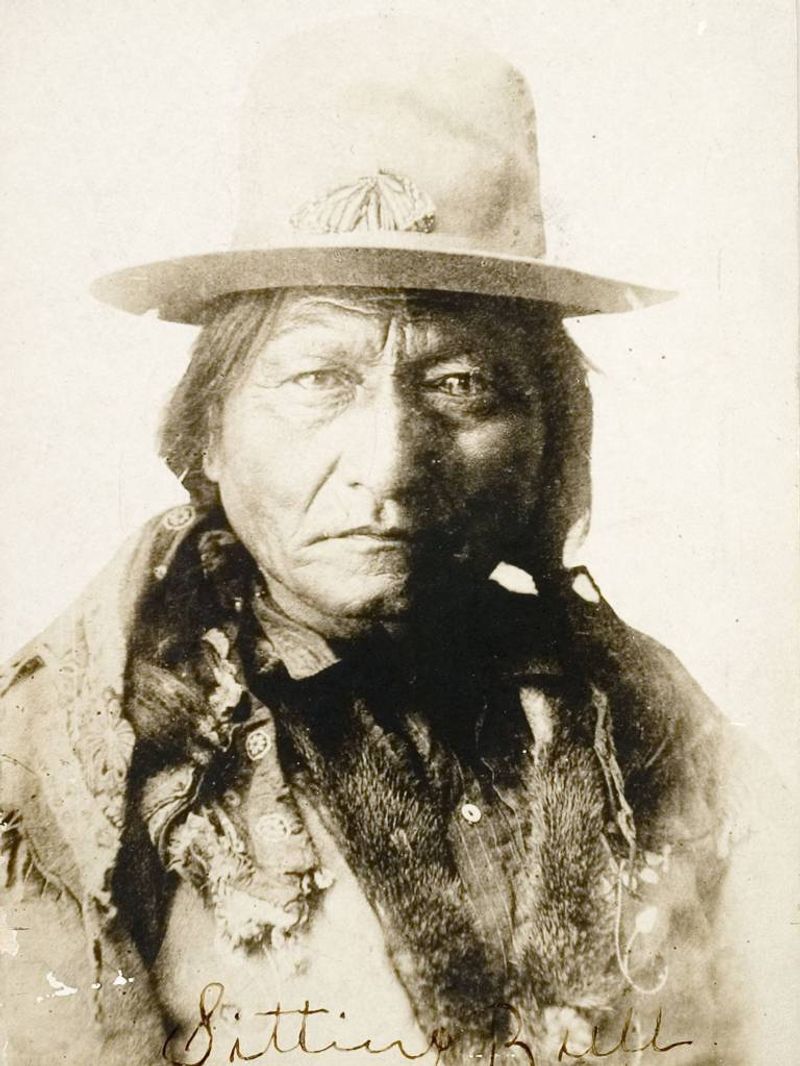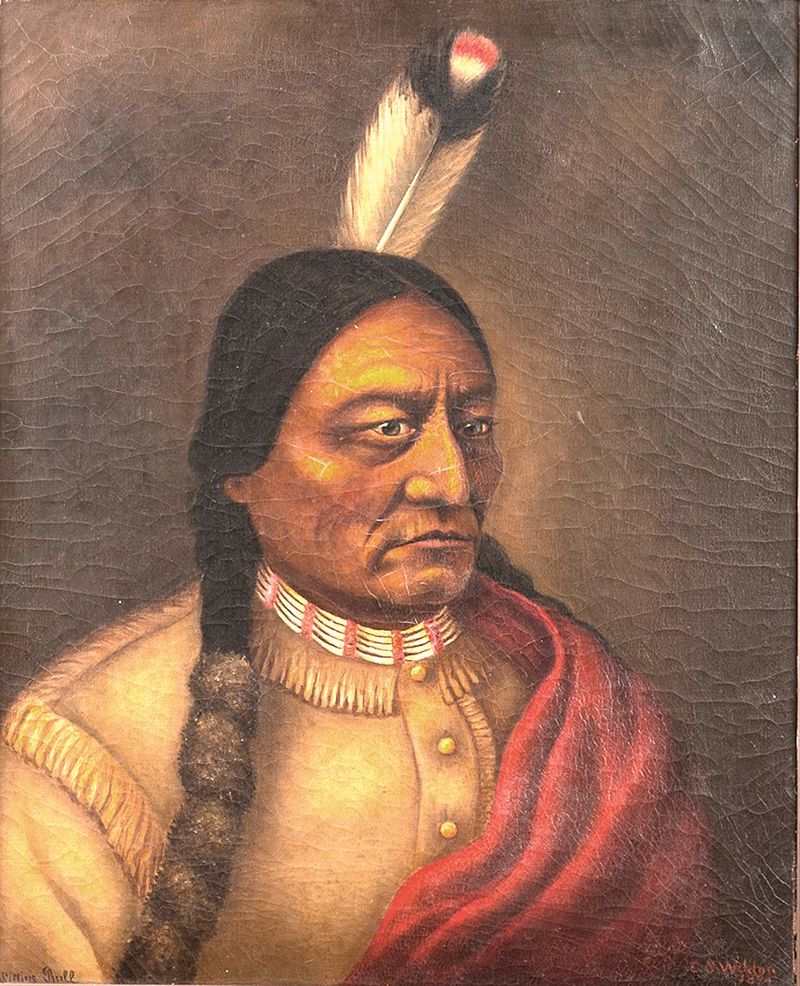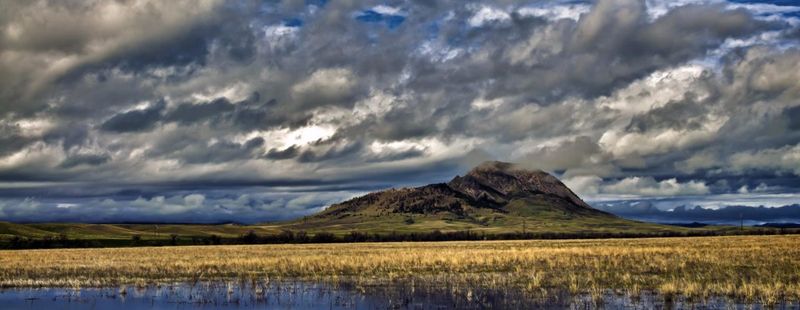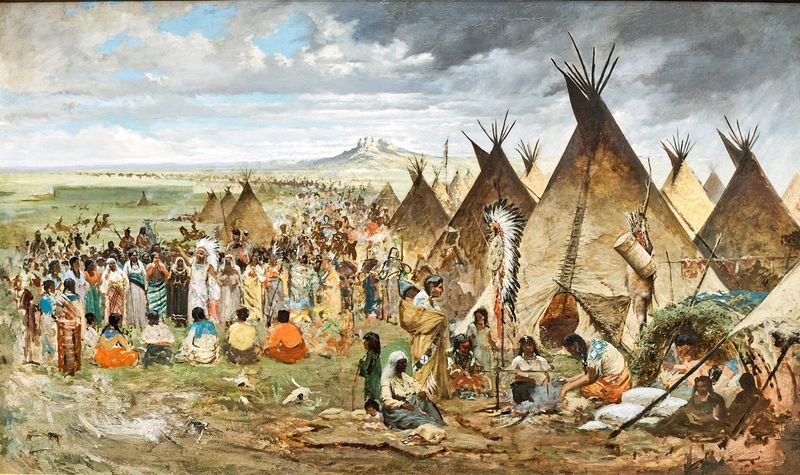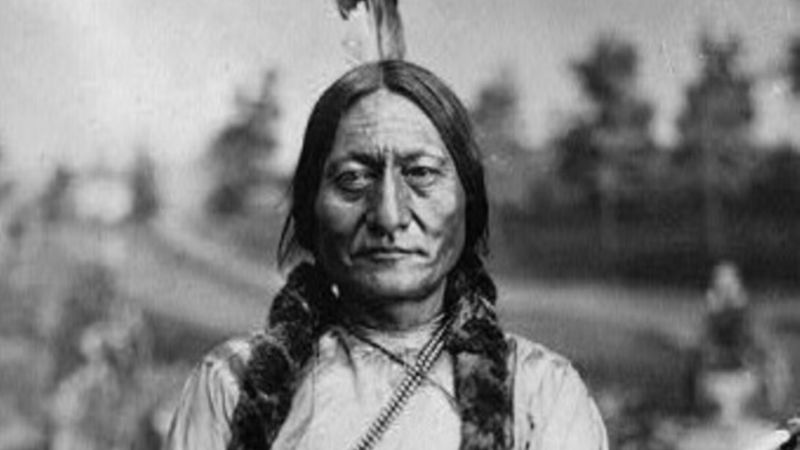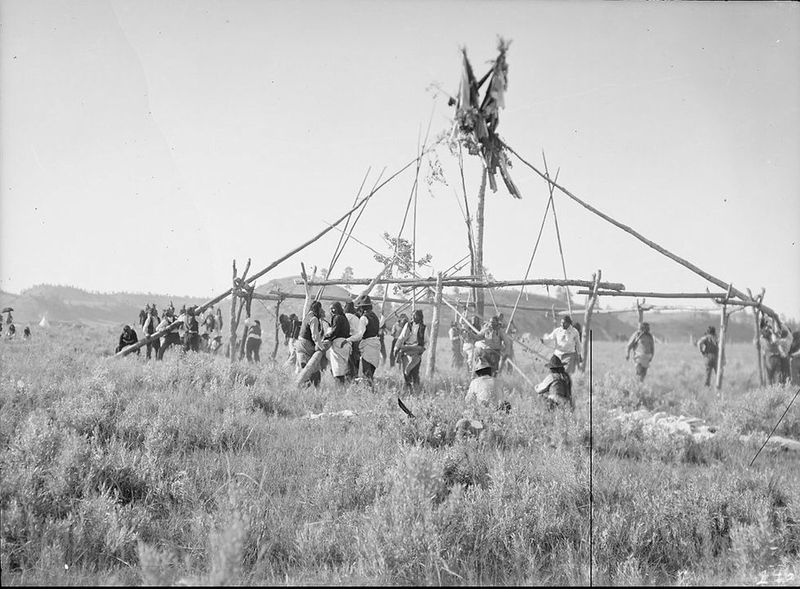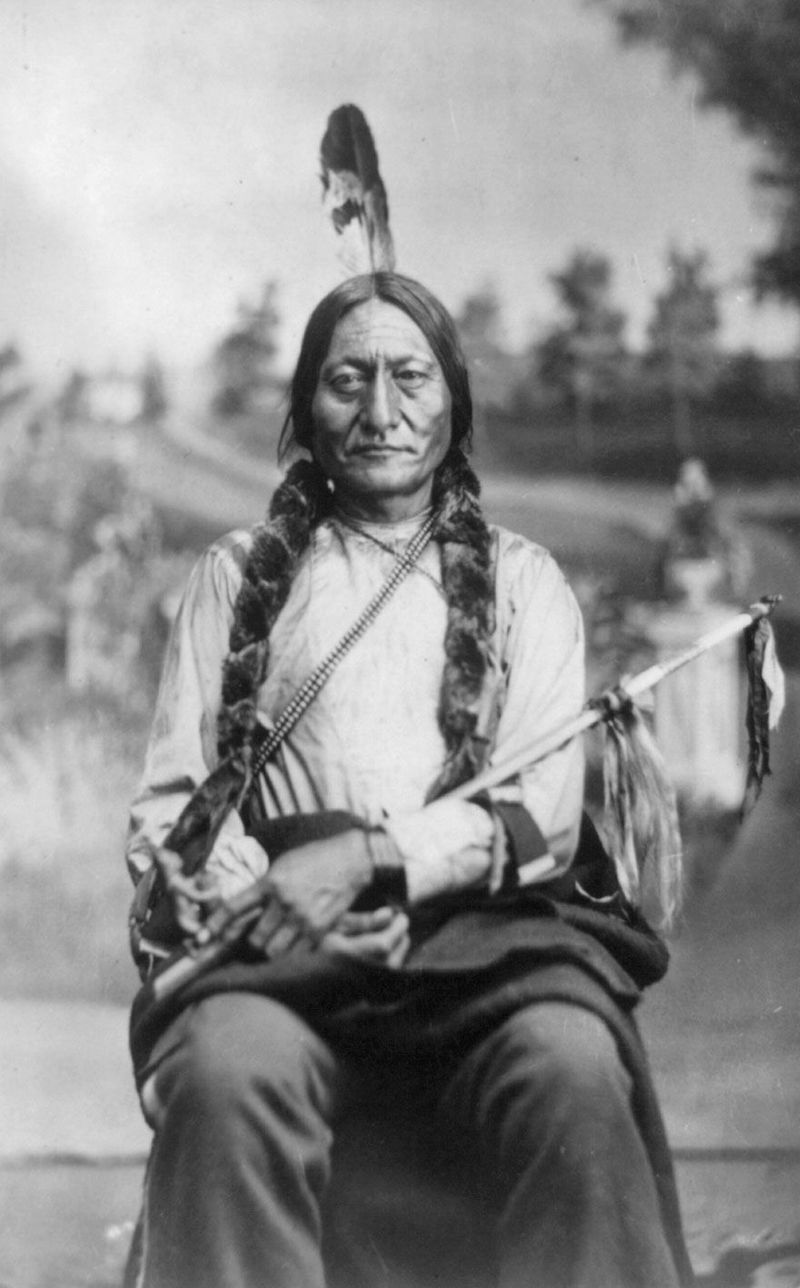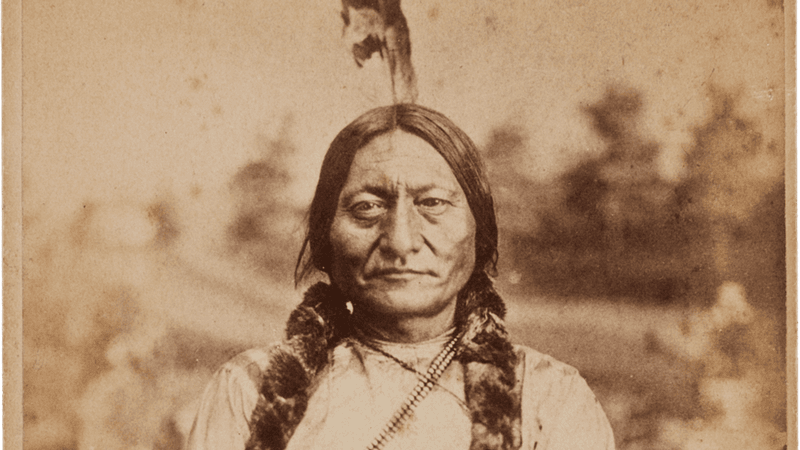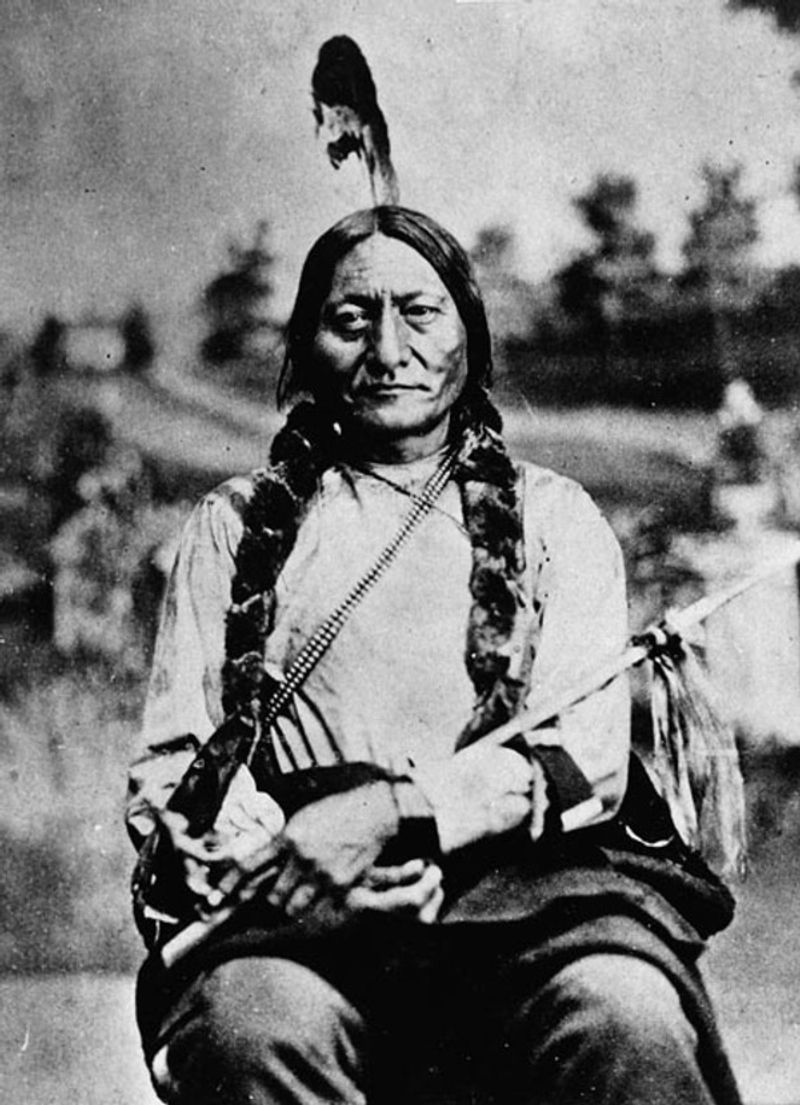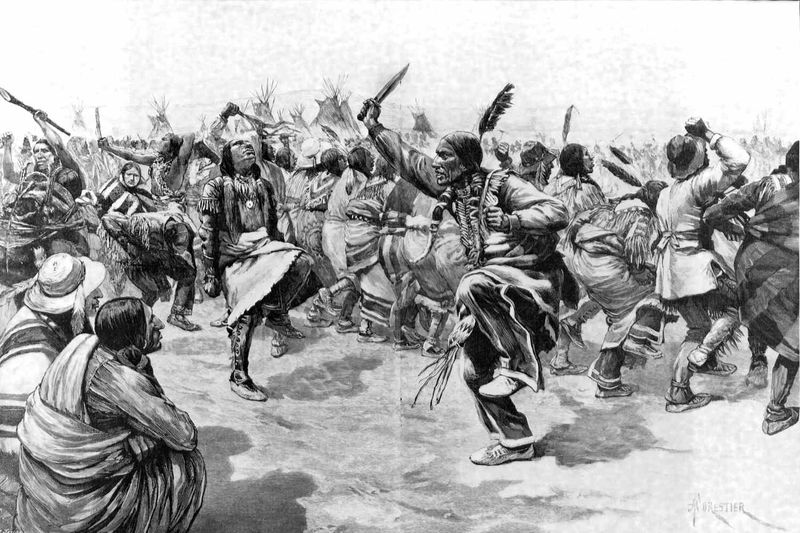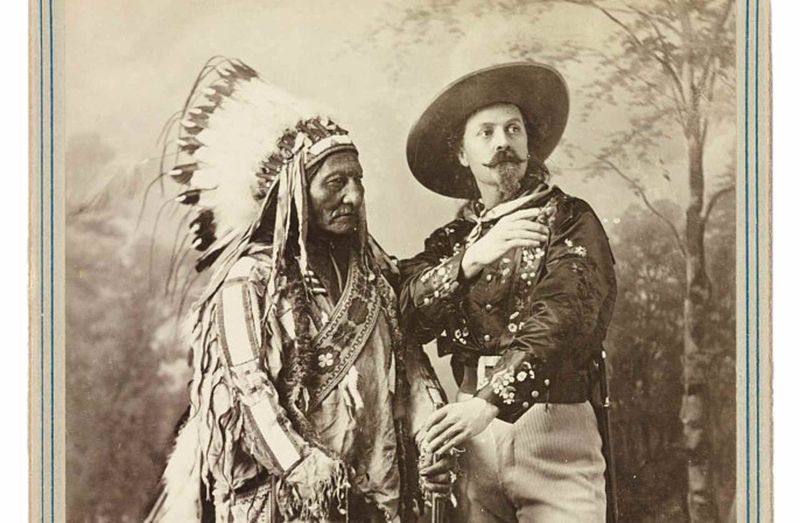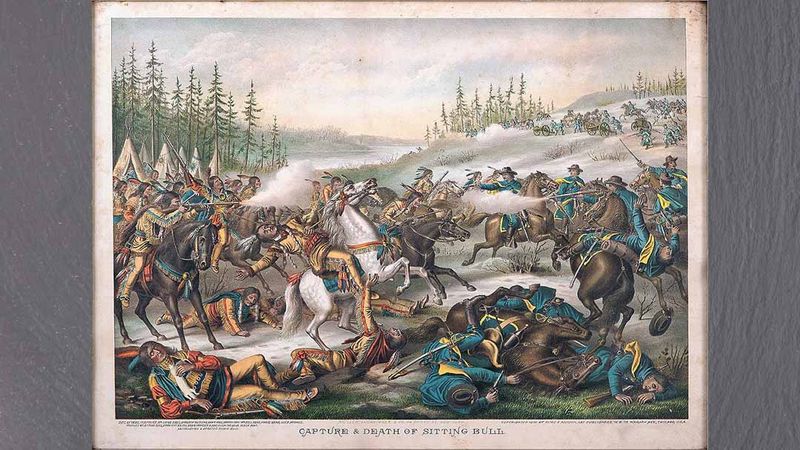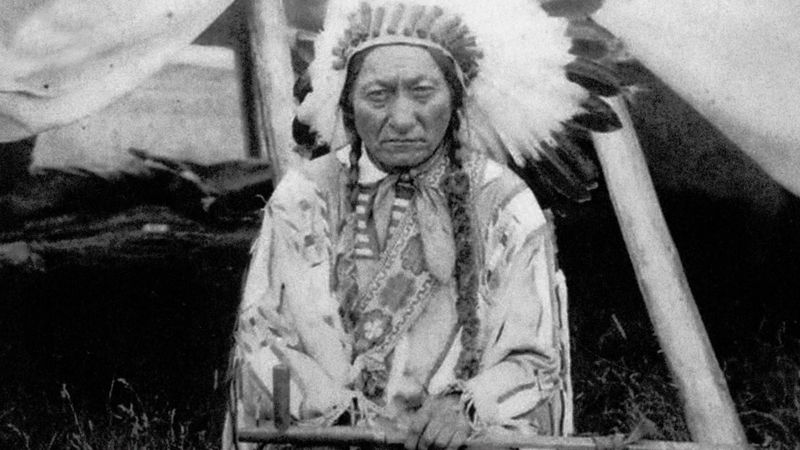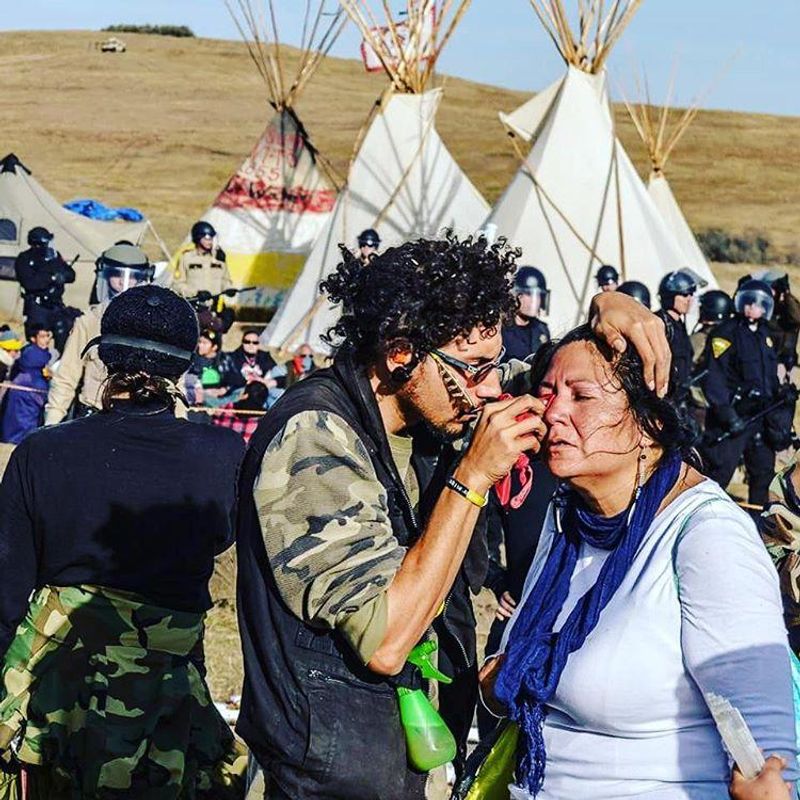Sitting Bull stands as one of history’s most powerful Indigenous leaders, blending spiritual wisdom with unwavering resistance against American expansion. As both a holy man and war chief of the Hunkpapa Lakota, he inspired his people during a time of existential threat. His visions, ceremonies, and refusal to surrender sacred lands united tribes and created a legacy that continues to resonate in Indigenous resistance movements today.
1. Sacred Calling Before Battle Glory
Before gaining fame as a resistance leader, Sitting Bull earned deep respect as a Wičháša Wakháŋ (holy man) among the Lakota. His spiritual apprenticeship began early, learning sacred ceremonies and developing his connection to the spirit world.
This foundation in Lakota spirituality shaped every decision he would later make as a leader. Rather than seeking personal glory in battle, he approached conflict through a spiritual lens.
The tribal councils valued his interpretations of dreams and visions, often making crucial decisions based on his spiritual guidance. This religious authority gave him influence that extended far beyond military matters.
2. Name That Embodied Resistance
“Tatanka Iyotake” – Buffalo Bull Who Sits Down – wasn’t just a name but a prophecy of Sitting Bull’s unwavering stance against American expansion. The buffalo symbolized sustenance and strength to the Lakota people.
His name evoked the image of a powerful buffalo bull, planted firmly on the ground, impossible to move. Fellow tribal members recognized this quality in him from an early age.
When negotiators and military officials tried to pressure him into accepting treaties, this immovable quality became his defining characteristic. His name became synonymous with resistance itself.
3. Prophetic Vision of Victory
The summer of 1876 brought an extraordinary spiritual experience that would change the course of Native American resistance. During an intense Sun Dance ceremony, Sitting Bull fell into a trance and received a powerful vision.
He saw soldiers falling upside down into the Lakota camp “like grasshoppers.” The tribal elders interpreted this as a prophecy of victory against the U.S. Army. Word of this vision spread rapidly through Indigenous communities.
Warriors from multiple tribes – Lakota, Cheyenne, and Arapaho – gathered with renewed confidence. Just weeks later, they defeated Lieutenant Colonel George Armstrong Custer at the Battle of the Little Bighorn.
4. Uncompromising Treaty Stance
Paper promises meant nothing to Sitting Bull when they came from a government that repeatedly broke its word. While other chiefs signed the 1868 Fort Laramie Treaty, Sitting Bull refused to mark any document surrendering Lakota land.
“The white man made us many promises, more than I can remember, but they never kept but one: they promised to take our land, and they took it.” These words reflected his deep distrust of American intentions.
His spiritual connection to the land made such agreements sacrilegious. Sitting Bull recognized that each treaty represented not compromise but spiritual surrender, something he could never accept.
5. Guardian of Sacred Lands
The Black Hills – Paha Sapa – represented far more than territory to Sitting Bull; they were the heart of Lakota spiritual identity. When gold was discovered there in 1874, he led fierce opposition to mining incursions.
“One does not sell the earth upon which the people walk.” This principle guided his resistance to American expansion. Every mountain, river, and valley held spiritual significance and ancestral connections.
Sitting Bull taught that the land wasn’t a commodity but a relative deserving protection. This sacred relationship with the earth formed the spiritual foundation of his resistance movement, inspiring followers to defend their homeland against overwhelming odds.
6. Spiritual Bridge Between Tribes
Few leaders could unite historically rival tribes like Sitting Bull did through his spiritual authority. His reputation as a holy man transcended traditional tribal boundaries, creating unprecedented unity during a critical period.
The great Lakota gathering of 1876 brought together thousands from different bands. Sitting Bull conducted ceremonies that reinforced their shared spiritual heritage and common threat.
Even tribes with past conflicts – Lakota, Cheyenne, and Arapaho – found common ground under his spiritual guidance. This unity proved decisive at the Battle of the Little Bighorn, where combined forces achieved their greatest victory against the U.S. military.
7. Purpose Beyond Personal Power
Unlike leaders driven by ambition, Sitting Bull’s resistance flowed from spiritual obligation rather than desire for personal glory. “I wish all to know that I do not propose to sell any part of my country.” This statement reflected his role as spiritual steward rather than ruler.
Fellow Lakota recognized that his opposition to American expansion came from visions and ceremonies rather than political calculation. Even when offered personal wealth and position, he refused to compromise.
His commitment to spiritual principles over personal gain earned him unmatched moral authority. This pure motivation inspired warriors to follow him through incredible hardship, knowing his decisions came from sacred guidance.
8. Revival of the Sun Dance
The rhythmic drums echoed across the plains as Sitting Bull revitalized the Sun Dance ceremony during America’s westward expansion. This sacred four-day ritual involved fasting, prayer, and physical sacrifice to renew spiritual connections.
When the U.S. government later banned such “heathenish” ceremonies, Sitting Bull continued practicing them in secret. The Sun Dance strengthened community bonds and reinforced Lakota identity during cultural assault.
Participants danced around a sacred pole, sometimes with eagle bone whistles piercing their chest muscles. Through this shared spiritual experience, warriors gained courage and unity that would prove essential in their resistance struggles.
9. Beacon of Cultural Preservation
As government boarding schools forcibly removed Lakota children to “kill the Indian, save the man,” Sitting Bull stood as a living reminder of their true identity. He refused to cut his hair, abandon traditional dress, or adopt Christianity.
“I would rather die an Indian than live a white man.” This stance inspired others to preserve their cultural practices despite intense pressure. His home became a gathering place where traditional stories and ceremonies continued.
Young Lakota looked to him as a cultural touchstone during rapid change. By embodying traditional values in his daily life, Sitting Bull provided a visible alternative to assimilation, showing that resistance existed beyond the battlefield.
10. Spiritual Guide in Exile
After the victory at Little Bighorn, Sitting Bull led his people into Canadian exile rather than surrender. Even in this difficult period, his spiritual leadership provided stability and hope.
The harsh winters and food shortages tested their resolve. Yet Sitting Bull conducted ceremonies that maintained their spiritual connection to the homeland they’d left behind.
For five years in the “Grandmother’s Land” (Canada), he preserved Lakota traditions while negotiating with new authorities. His spiritual presence reminded his people that though physically displaced, their cultural identity remained intact. This period demonstrated that his influence extended far beyond military matters.
11. Steadfast at Standing Rock
Hunger finally forced Sitting Bull’s surrender in 1881, landing him at Standing Rock Reservation. Though physically confined, his spiritual resistance never wavered.
Government agents tried everything to break his influence. They withheld rations when he refused to farm “like a white man” and sent missionaries to convert him. Sitting Bull responded by continuing traditional ceremonies and encouraging others to maintain their spiritual practices.
His cabin became a center of cultural resistance. Young people visited to hear stories and receive guidance in traditional ways. Even under constant surveillance, he maintained his role as spiritual leader, demonstrating that confinement could not extinguish Lakota identity.
12. Supporter of the Ghost Dance
The messianic Ghost Dance movement swept through Native communities in 1890, promising spiritual renewal and the return of traditional ways. Though not its creator, Sitting Bull recognized its power to restore hope to a suffering people.
Dancers wore special shirts believed to stop bullets, moving in circles until they collapsed in trances. Many reported visions of ancestors returning and buffalo herds reviving across the plains.
Government agents feared this spiritual awakening would spark rebellion. Sitting Bull’s support lent the movement tremendous credibility. While skeptical of some claims, he protected Ghost Dancers from harassment, seeing how the ceremonies restored dignity to a people who had lost so much.
13. Feared for His Spiritual Influence
Even in his final years, Sitting Bull’s spiritual authority terrified American officials. “He is the chief of all the Bad Indians,” wrote Indian Agent James McLaughlin, despite Sitting Bull living peacefully at Standing Rock.
His mere presence inspired resistance to government policies. Young men sought his blessing before making important decisions, often ignoring official directives afterward.
Officials monitored who visited his cabin and what ceremonies he conducted. This fear of his spiritual influence ultimately led to the decision to arrest him in December 1890. The authorities recognized that his power came not from weapons but from his role as a spiritual beacon that continued to guide his people through dark times.
14. Tragic Final Stand
Dawn broke on December 15, 1890, as 43 Indian police surrounded Sitting Bull’s cabin with orders to arrest him. The spiritual leader, then 59, initially offered no resistance.
Chaos erupted when supporters gathered to protect him. “You shall not take him!” someone shouted. In the confusion, police shot Sitting Bull in the chest and head.
Even his death carried spiritual significance to the Lakota people. Many believed the spiritual power that had protected their nation for so long died with him. The manner of his killing – by fellow Natives under U.S. command – symbolized the tragic divisions created by colonization.
15. Precursor to Wounded Knee
Sitting Bull’s blood had barely dried when the final tragedy of the Indian Wars unfolded. Just two weeks after his death, over 250 Lakota men, women, and children were massacred at Wounded Knee Creek.
Many of those killed had been his followers, now leaderless and vulnerable. Without his spiritual guidance, they had no one to help navigate the dangerous tensions with military forces.
The timing was no coincidence. U.S. authorities had targeted Sitting Bull precisely because they feared his spiritual influence might prevent the final subjugation of the Lakota people. His death removed the last major spiritual obstacle to complete government control, paving the way for the massacre that effectively ended armed Indigenous resistance.
16. Enduring Spiritual Legacy
Over a century after his death, Sitting Bull’s spiritual resistance continues inspiring Indigenous movements worldwide. The Standing Rock protests of 2016-2017 against the Dakota Access Pipeline echoed his defense of sacred land and water.
“The warriors we need to fight for the people now are the ones whose weapons are their minds.” This quote attributed to him resonates with modern Indigenous leaders combining spiritual tradition with contemporary activism.
His grave site remains a place of pilgrimage and prayer. Native spiritual leaders invoke his example when facing environmental threats to tribal lands. The spiritual foundation he established continues providing strength to new generations fighting for sovereignty and cultural survival.
17. Keeper of Sacred Pipe Traditions
The sacred pipe ceremony formed the spiritual cornerstone of Sitting Bull’s leadership. As a pipe carrier, he maintained one of the Lakota’s most sacred traditions during tremendous cultural upheaval.
“We are the one being, one with the earth.” These words often accompanied his pipe ceremonies, reinforcing the sacred connection between people, land, and spirit. The ritual sharing of the pipe created bonds that transcended daily conflicts.
When negotiating with other tribes or even U.S. officials, he would often begin with this ceremony. By maintaining these sacred traditions despite government prohibition, Sitting Bull ensured vital spiritual practices survived to be passed to future generations.
